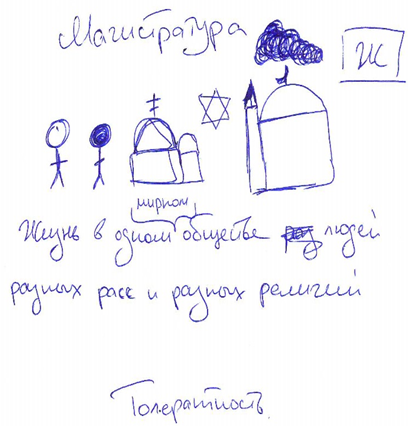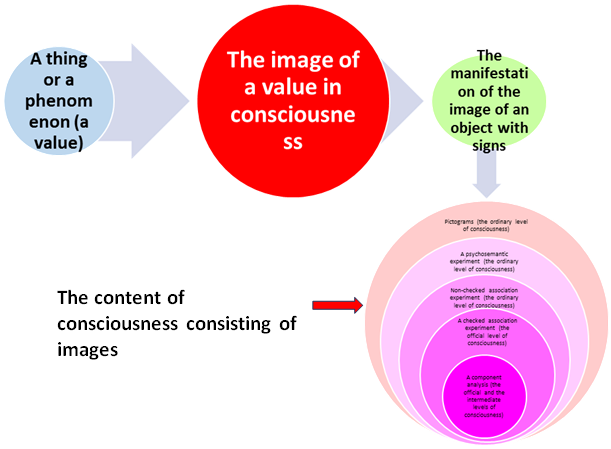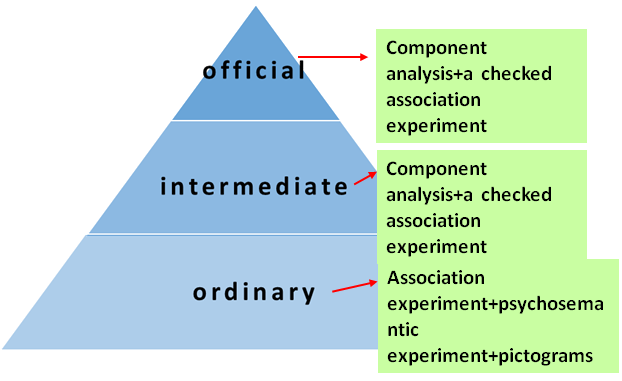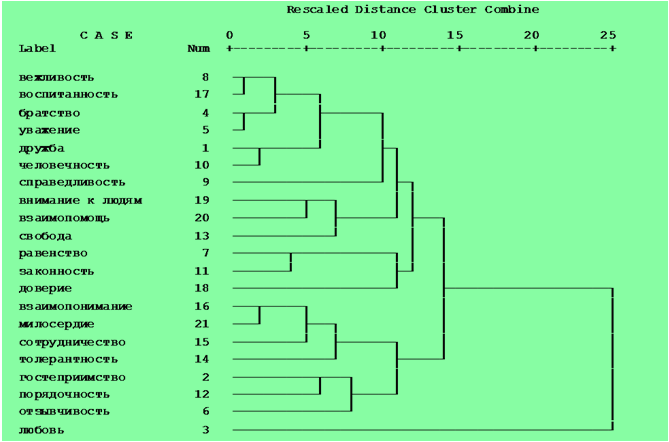ПСИХОЛИНГВИСТИЧЕСКИЙ АНАЛИЗ СОДЕРЖАНИЯ ЦЕННОСТЕЙ В ЯЗЫКОВОМ СОЗНАНИИ
Аннотация
Introduction
The present research article aims at revealing the content of human values through the insight into the images, character and the reflection of values existing in linguistic consciousness. The so-called multi-faceted or eclectic technology of describing values was applied in the course of the research. The content of the value reflection is seen as all kind of knowledge associated with a thing or phenomenon that a person gets in the process of perceiving things and phenomena, the knowledge itself is kept in human consciousness.
Revealing and analyzing the content of the image and reflection of values in consciousness are usually done at 3 levels of linguistic consciousness: official, intermediate and ordinary. The data received is treated and handled according to age and gender groups of the respondents. To complete this very multi-faceted research a range of experiments are carried out (a checked association experiment; a component analysis; a non-checked association experiment; a psychosemantic experiment; a pictographic experiment).
Pic. 1 – Pictogram
Method
As it was mentioned at the beginning of the article values existing in human consciousness are examined and studied by means of different experiments. So the so-called triangulation method (well-known in Philosophy and Sociology) serves as a methodological framework for this kind of research, sometimes it may also be called an eclectic approach to analyzing phenomena. The essence of the method is to study and examine this of that phenomenon bearing in mind various aspects of its existence.
In this case it is vital to take into account that any kind of phenomenon can take different forms. Studying all these forms of existence contributes to the objectivity and credibility of the research. The process of forming word images in consciousness is dynamic. Such processes are vital to describe by means of different research methods applying various types of data. All kinds of data are supposed to be accurate and add to understanding phenomena entirely.
The task of the research like this is to construct the sense of a word by means of several sign objectivations, as this very triangulation method provides a researcher with an opportunity to examine values with the help of different sign objectivations (dictionary definitions, associations, semantic field, symbolic pictures, tree diagram).
Discussion
The theoretical ground of the present research work is a theory where human consciousness is regarded as the world reflection. Human consciousness or in other words the world reflection is linked to the category of linguistic consciousness. The world reflection fixed in human consciousness is considered as a projection of the objective world where the images and characters of the real world are, established and consolidated in a form of something material as well as linguistic. So, any language functions as a form of objectivation of human consciousness. The world reflection in its turn can be shown as a system of meanings. The system of meanings is seen by a person as a system of landmarks in life when a person cognizes the world. While acting in the world a person perceives some knowledge that is converted into personal experience and expertise of a person, the latter exist in human consciousness.
Thus, linguistic consciousness is in charge of not only forming, keeping and processing word meanings, but it also determines a person’s attitude to life. Linguistic consciousness guides and directs a person’s activity, specifies and shapes a person’s attitude to life. Judging from the above-mentioned it is concluded that human consciousness evaluates life and different objects and that is why linguistic consciousness is full of the value component.
Theoretically the present research finds its ground in the works on psychology (The Theory of Activity) by A.N. Leontiev; in the idea of the components of consciousness images by V.P. Zinchenko who wrote about the fact that linguistic consciousness is the world reflection itself; psycholinguistic theory of the word as a means of having access to a person’s information basis (A.A. Zalevskaya). Moreover, the concept of the structure of consciousness images or reflection (F.E. Vasyljuk) and the conception of linguistic consciousness as the world reflection carried out through language (E.F. Tarasov).
Pic. 2 – The structure and the content of the image of consciousness
Results
The present research seems to be quite acute as the very issue of values is of paramount importance nowadays.
In the focus of the present research there is linguistic consciousness, the access to which becomes possible via applying a range of experiments to reveal the content of the reflection and images of linguistic consciousness. Linguistic consciousness is understood as an intermediate world reflection, in other words, the real world is mirrored in a person’s consciousness and that is manifested in the world with the help of both lexical and other types of indications (or signs), e.g. pictographics (pictures).
All in all, linguistic consciousness is analyzed in the research together with all the forms and types that represent the value under consideration in linguistic consciousness.
In the course of the research the following types of scientific material are examined: definitions and dictionary articles from general scientific and lexicographic sources, from fiction and publicistic works; from the materials contained in the National Body of Russian language together with the materials gained in experiments. The whole volume of the scientific material is seen as a certain database.
In psychological terms human consciousness is a kind of generalized reflection of the whole world around people, consciousness in this case is viewed as a multi-level system based on the activity of a person involved in building up the world images reflected by consciousness.
While describing the word meaning it is implied that psycholinguistics defines the meaning as a process (or a range of various processes). When these processes are combined we can assume that a certain correspondence does exist among the verbal form, the general socially accepted meaning of the word and the emotional impression of the word that is always ranked as a value.
Psycholinguists are first of all interested in those forms of the word meanings that are stocked in a person’s individual consciousness. In the consciousness the meanings are presented in a form of both correlation and opposition of words in the process of their usage and application in communication and activity. Various differential characteristics of the meaning correlate with different ways of cooperation between words in the process of speech activity. The semantic components of the word meaning are understood only in communication, where it is possible to reveal the whole variety of the word usage and application.
A.A. Leontiev described this very system as a system of associative connections of a word. The process of the sense forming in human consciousness is dynamic and is closely linked to the context usage. Thus, the meaning can be described as a construction including the lexical meaning, the meaning associated with this or that object or phenomenon and the context meaning that can be revealed only under certain conditions and in a certain situation.
One of the main tasks of psycholinguistics is to find the depth of the correlation between mental structures and the motives of speech activity through verbal and non-verbal associations, emotional manifestation. In this case it is vital to underline that different sign objectivations of images and characters are the basic units for analyzing the content of linguistic consciousness images. The sign objectivations can take a form of lexical and other signs, e.g. pictograms (pictures). A value that is expressed with a word has its place in a person’s consciousness and takes a form of a word or any other sign (a pictogram).
In the end it is possible to reveal the content of the images of values in linguistic consciousness. As a result of the combination of the data gained both in linguistic and psycholinguistic analysis it is possible to discover and interpret similarities and differences in the content of this or that image (or reflection) at official, intermediate and ordinary levels of linguistic consciousness.
Pic. 3 – Levels of public consciousness
The official level of public consciousness manifests itself in encyclopedic texts. The intermediate level of public consciousness is represented with the examples from definition dictionaries as well as with the examples from the National Body of Russian language. The ordinary level of public consciousness is shown with the results of the association experiment, psychosemantic experiment and pictographic experiment.
Only in the process of speech production and perception it is possible to get access to the content of linguistic and non-linguistic consciousness at the level of the general (ordinary) public consciousness aiming at clearing up the ways of how ordinary speakers understand in speech such multi-faceted semantic structures as values.
While analyzing the results of the association experiment the data gained from the respondents of different age embodies the information on the dynamics of the age-related and gender-related development of consciousness images.
In the course of the psychosemantic experiment the main task is to build up the so-called semantic space (or a mental map) of a value. This mental map has a form of a tree diagram that is also age- and gender-related.
Pic. 4 – Tree diagram for a psychosemantic experiment
It should be mentioned once again that the content of consciousness images have their manifestation not only in word signs, but in pictograms as well. Picture signs (or pictograms) according to F.E. Vasiljuk theory provide the access to non-linguistic consciousness pointing at a close link between real objects and the images of them existing in consciousness.
Conclusion
In conclusion it is important to underline the unique character of this kind of research as a multi-faceted description of the content of the images of values via psycholinguistic and linguistic methods is not wide-spread. With the help of such a method the content of the images of values is revealed and represented at three levels of public consciousness – official; intermediate and ordinary. The results of this kind of research greatly contribute to the theory of forming the images of values and provide an opportunity to fully understand the structure and the content of the images of values in linguistic consciousness.
Список литературы
Василюк Ф.Е. Структура образа. // Вопросы психологии. – 1993. – № 5. – С. 5-19.
Залевская А.А. Значение слова и возможности его описания. // В сб. статей «Языковое сознание: формирование и функционирование», отв. ред. Н.В. Уфимцева. М.: ИЯз РАН, 2000. – С. 35-54.
Зинченко В.П. Образ и деятельность. М.-Воронеж, 1997. – 325 с.
Леонтьев А.А. Общие сведения об ассоциациях и ассоциативных нормах. // Словарь ассоциативных норм русского языка. – М.: Изд-во МГУ, 1977. – С. 5-16.
Леонтьев А.Н. Психология образа. Вестник Московского университета. Серия «Психология». – 1986. – № 3.
Тарасов Е.Ф. Актуальные проблемы анализа языкового сознания. // В сб. «Языковое сознание и образ мира». Отв. ред. Н.В. Уфимцева. М.: ИЯз РАН, 2000. – С. 24-33.




